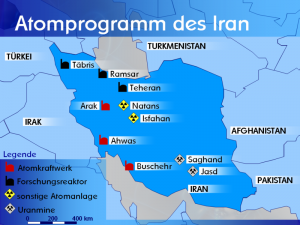“This Isn’t the Assassination Surveillance Drone You’re Looking For”
[YouTube]vzcWPKAv2Ow[/YouTube]
Before you read this David Sanger/Scott Shane piece reporting that the RQ-170 Sentinel drone that just went down in Iran was, “among other missions, [] looking for tunnels, underground facilities or other places where Iran could be building centrifuge parts or enrichment facilities,” I invite you to review what David Sanger has been writing for the last few months. Sure, he’s been the key person orchestrating the IAEA Iran report story, going back months. There’s also this story, curiously mixing reporting on the capture of the drone with a report citing sources describing surveillance photos of the Iranian missile testing base conveniently blown up while Iran’s top missile expert was there.
And then there’s this story from last month, which is or was titled “The Secret War with Iran.” It suggests how the assassins targeting Iran’s nuclear scientists knew exact details of their daily commutes, and then went on to describe the centrality of drones to our surveillance efforts against Iran.
COMMUTING to work in Tehran is never easy, but it is particularly nerve-racking these days for the scientists of Shahid Beheshti University. It was a little less than a year ago when one of them, Majid Shahriari, and his wife were stuck in traffic at 7:40 a.m. and a motorcycle pulled up alongside the car. There was a faint “click” as a magnet attached to the driver’s side door. The huge explosion came a few seconds later, killing him and injuring his wife.
On the other side of town, 20 minutes later, a nearly identical attack played out against Mr. Shahriari’s colleague Fereydoon Abbasi, a nuclear scientist and longtime member of the Islamic Revolutionary Guards Corps. Perhaps because of his military training, Mr. Abbasi recognized what was happening, and pulled himself and his wife out the door just before his car turned into a fireball. Iran has charged that Israel was behind the attacks — and many outsiders believe the “sticky bombs” are the hallmarks of a Mossad hit.
[snip]
Iran may be the most challenging test of the Obama administration’s focus on new, cheap technologies that could avoid expensive boots on the ground; drones are the most obvious, cyberweapons the least discussed. It does not quite add up to a new Obama Doctrine, but the methods are defining a new era of nearly constant confrontation and containment. Drones are part of a tactic to keep America’s adversaries off balance and preoccupied with defending themselves. Read more →

